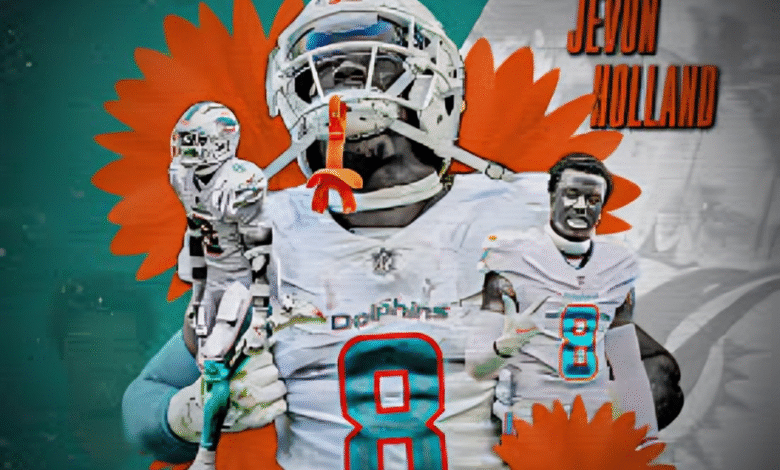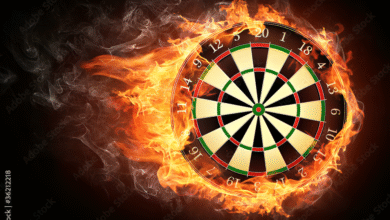Graphic Sports The Art and Impact of Visuals in Athletic Branding

Graphic sports, a dynamic fusion of visual design and athletic culture, is transforming how sports brands connect with fans and athletes alike. This innovative field combines graphic design principles with the energy and passion of sports to create compelling logos, uniforms, merchandise, and digital content that resonate deeply with audiences. From the sleek logos of professional teams to vibrant fan apparel, graphic sports is about more than aesthetics—it’s about storytelling, identity, and creating emotional connections. In this article, we’ll explore the essence of graphic sports, its evolution, its role in modern athletics, and why it’s a game-changer for teams, athletes, and fans.
What Is Graphic Sports
Graphic sports refers to the strategic use of visual design elements to enhance the branding, marketing, and fan engagement of sports teams, events, and athletes. It encompasses everything from designing team logos and jerseys to creating eye-catching social media graphics, stadium visuals, and merchandise. The goal of is to craft a cohesive and memorable identity that captures the spirit of a team or athlete while appealing to a global audience.
Unlike traditional graphic design, graphic sports operates in a high-energy, competitive environment where visuals must instantly grab attention and evoke passion. Whether it’s the bold swoosh of Nike or the iconic crest of FC Barcelona, creates symbols that transcend the game, becoming cultural touchstones.
The Evolution of Graphic Sports
The history of graphic sports is a fascinating journey through time, reflecting changes in design trends, technology, and fan culture.
Early Days: Simple Symbols and Team Pride
In the early 20th century, sports branding was minimalistic. Teams used basic logos, often featuring simple text or symbols like stars or shields. For example, early baseball teams like the New York Yankees adopted straightforward designs that emphasized local pride. These early efforts were functional but lacked the sophistication seen today.
The Rise of Commercialization
By the mid-20th century, sports became big business, and evolved to meet commercial demands. Teams began working with professional designers to create logos that could be easily reproduced on merchandise. The NBA’s iconic silhouette logo, designed in 1969 by Alan Siegel, is a prime example of creating a timeless emblem that represents an entire league.
The Digital Age: Dynamic and Interactive Designs
The advent of digital media in the late 20th and early 21st centuries revolutionized graphic sports. Teams and brands started using animated logos, interactive social media graphics, and immersive stadium displays. Today, incorporates motion graphics, augmented reality (AR), and virtual reality (VR) to engage fans in new ways. For instance, teams like the Los Angeles Lakers use vibrant social media visuals to hype up games, blending with real-time fan engagement.
The Role of Graphic Sports in Modern Athletics
Graphic sports plays a pivotal role in shaping the identity and success of sports franchises, athletes, and events. Here’s how it impacts various aspects of the industry:
1. Building Team Identity
A team’s logo, colors, and uniforms are more than just visuals—they’re the heart of its identity. professionals work to create designs that reflect a team’s history, values, and fanbase. For example, the Chicago Bulls’ iconic red and black logo, featuring a fierce bull, embodies strength and determination, resonating with fans worldwide.
2. Enhancing Fan Engagement
Graphic sports creates visuals that spark excitement and loyalty among fans. From vibrant posters to dynamic social media content, these designs make fans feel connected to their teams. For instance, campaigns during major events like the Super Bowl or the Olympics use bold visuals to amplify the hype and draw in global audiences.
3. Driving Merchandise Sales
Merchandise is a massive revenue stream for sports teams, and graphic sports is at its core. Eye-catching jersey designs, stylish caps, and unique fan gear rely on strong strategies to stand out in a crowded market. Brands like Adidas and Under Armour use to create apparel that fans proudly wear, turning them into walking billboards.
4. Supporting Athlete Branding
Individual athletes also leverage graphic sports to build their personal brands. Stars like Serena Williams and Cristiano Ronaldo collaborate with designers to create logos, signature clothing lines, and social media visuals that reflect their personality and values. These efforts help athletes stand out and connect with fans on a personal level.
5. Elevating Event Experiences
Major sporting events like the FIFA World Cup or the Tour de France rely on to create memorable experiences. From event logos to stadium banners and digital overlays, ensures that every visual element enhances the atmosphere and leaves a lasting impression.
Key Elements of Effective Graphic Sports Design
Creating impactful graphic sports designs requires a blend of creativity, strategy, and technical skill. Here are the core elements that make stand out:
1. Bold and Memorable Logos
A great sports logo is simple, recognizable, and timeless. It should work across various mediums, from jerseys to billboards. The Toronto Raptors’ claw logo, for example, is bold and instantly identifiable, making it a cornerstone of their graphic sports identity.
2. Vibrant Color Schemes
Colors in graphic sports evoke emotions and align with a team’s identity. For instance, the green and gold of the Green Bay Packers symbolize tradition and resilience. Designers carefully select color palettes to create visual harmony and emotional impact.
3. Typography That Packs a Punch
Strong, dynamic typography is a hallmark of. Whether it’s the sleek font on a jersey or the bold text in a promotional graphic, typography must be legible and impactful. Custom fonts are often designed to reflect a team’s unique personality.
4. Versatility Across Platforms
designs must work across print, digital, and physical mediums. A logo that looks great on a jersey should also shine on a mobile screen or a stadium jumbotron. This versatility ensures consistent branding across all touchpoints.
5. Cultural and Emotional Resonance
The best designs tap into the culture and emotions of the fanbase. For example, the Seattle Seahawks’ logo draws inspiration from Native American art, reflecting the region’s heritage and creating a deeper connection with fans.
The Impact of Technology on Graphic Sports
Technology has taken graphic sports to new heights, enabling designers to push creative boundaries and engage fans in innovative ways.
1. Digital Tools and Software
Modern relies heavily on tools like Adobe Photoshop, Illustrator, and After Effects. These programs allow designers to create intricate logos, animations, and 3D renderings that bring sports brands to life.
2. Augmented and Virtual Reality
AR and VR are transforming graphic sports by creating immersive fan experiences. For example, fans can use AR apps to see team logos come to life or experience virtual stadium tours. These technologies make more interactive and engaging.
3. Social Media and Real-Time Graphics
Social media platforms like Instagram and X demand real-time, eye-catching content. designers create dynamic posts, stories, and videos that capture the excitement of games and events, keeping fans engaged 24/7.
4. Data-Driven Design
Teams and brands now use data analytics to inform strategies. By analyzing fan preferences and engagement metrics, designers can create visuals that resonate with specific audiences, maximizing impact and reach.
Challenges in Graphic Sports
While graphic sports offers immense opportunities, it also comes with challenges:
- Balancing Tradition and Innovation: Teams with long histories must update their visuals without alienating loyal fans. Graphic sports designers must strike a delicate balance between modernizing designs and honoring tradition.
- Global Appeal: Sports brands often have international fanbases, requiring designs that resonate across cultures while avoiding missteps that could offend.
- Fast-Paced Demands: The sports industry moves quickly, with tight deadlines for new designs, especially during major events. professionals must deliver high-quality work under pressure.
- Sustainability: As fans demand eco-friendly merchandise, designers must consider sustainable materials and production methods for jerseys and gear.
The Future of Graphic Sports
The future of graphic sports is bright, with emerging trends poised to shape the industry:
- Personalized Fan Experiences: Advances in AI and data analytics will allow teams to create customized graphic sports content for individual fans, such as personalized jerseys or tailored social media graphics.
- Sustainable Design: Eco-conscious will prioritize sustainable materials and digital-first designs to reduce environmental impact.
- Immersive Technologies: As AR, VR, and mixed reality evolve, will create even more interactive and immersive experiences, from virtual fan zones to holographic player appearances.
- Global Collaborations:will increasingly involve collaborations with artists, influencers, and designers from diverse backgrounds, creating unique and culturally rich visuals.
FAQs
What is graphic sports
Graphic sports is the use of design to create visual elements for teams, athletes, and events, including logos, uniforms, merchandise, and digital content.
Why is graphic sports important in athletics
builds team identity, engages fans, drives merchandise sales, and enhances event experiences, making it a critical part of sports branding and marketing.
How do designers create effective graphic sports visuals
Effectivedesigns are bold, memorable, and versatile, using vibrant colors, strong typography, and culturally resonant elements to connect with audiences.
What role does technology play in graphic sports
Technology, including design software, AR, VR, and social media, enables designers to create dynamic, interactive, and data-driven visuals that engage fans.
What are the challenges in graphic sports
Challenges include balancing tradition and innovation, appealing to global audiences, meeting tight deadlines, and incorporating sustainable practices.
How is graphic sports evolving
is evolving with trends like personalized fan experiences, sustainable design, immersive technologies, and global collaborations, shaping the future of sports branding.
Conclusion
Graphic sports is more than just creating pretty visuals—it’s about capturing the heart and soul of athletics through design. From iconic logos to immersive digital experiences, shapes how fans connect with their favorite teams and athletes. As technology and fan expectations evolve, will continue to push boundaries, creating vibrant, meaningful, and unforgettable visuals that define the world of sports. Whether you’re a fan, athlete, or designer, is a thrilling field that celebrates creativity, passion, and the unifying power of athletics.



